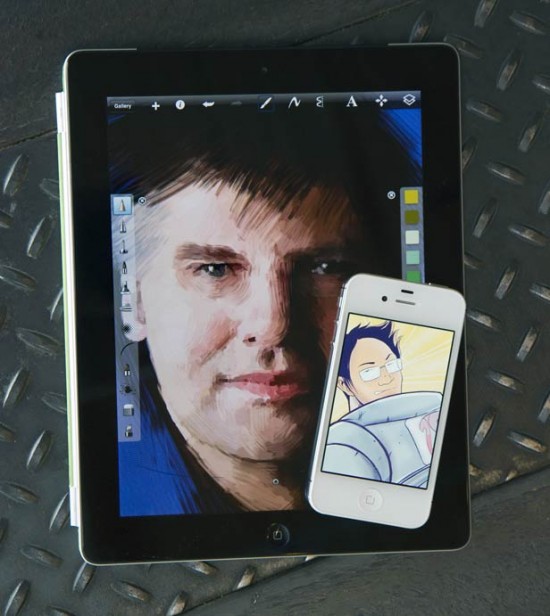Business Impact
How Autodesk Disrupted Itself with an App
A maker of high-end design software accidentally discovers a consumer hit.



When Chris Cheung and Thomas Heermann, two middle managers at the software company Autodesk, first showed off their new iPhone drawing app, they got some skeptical looks. Why would anyone want to doodle on that tiny screen? And what could a $2.99 app matter to a company with around $2 billion in annual revenue?
Two years later, Autodesk’s SketchBook apps for phones and the iPad are best-sellers that have been downloaded seven million times. It doesn’t add up to a huge amount of revenue: perhaps $15 million. But there’s more than money to this innovation story. With its first consumer hit, Autodesk now has more customers than it did in all its previous 29 years combined.
“It’s the best advertising we’ve had in years,” says Autodesk CEO Carl Bass. What’s more, the home-grown apps are teaching Autodesk how to reach a fast-growing new audience that uses tablets and phones. Last year, Autodesk launched a new consumer products division, which includes SketchBook and other design programs that don’t require users to have high-end computers.
The apps’ origins are a reminder that big companies can innovate too, although not necessarily in predictable ways. “You can’t institutionalize innovation. If you could, everyone would do it,” says Bass. He acknowledges he probably wouldn’t have put resources toward the app project—“But guess what? Two guys did it and didn’t ask anyone’s permission.”
When Cheung, an Autodesk product manager, and Heermann, his boss, assumed responsibility for SketchBook in 2008, it was a paint-and-sketch program for PCs and a sideline for Autodesk, which is best known for its high-powered AutoCAD software that architects and engineers use. At around $100, SketchBook’s price tag didn’t generate much interest among resellers, either. The basic task facing Cheung and Heermann, who work at a Toronto office far from the company’s headquarters in San Rafael, California, was to launch the next regular update of the program for PCs.
The previous year, Apple had launched the iPhone, and Cheung wondered whether SketchBook could work on it. With Heermann’s assent, he asked developers to explore that question once they’d made sure the PC version would get done on time. Meanwhile, small companies released doodling apps for the iPhone, resolving the question of whether anyone would want to sketch on a phone’s screen.
Still, the project remained low-key: even though Cheung and Heermann had to get Autodesk’s tax, legal, and finance teams involved before they could release SketchBook to Apple’s online App Store, they never made a formal presentation to top management. Heermann says Bass saw the app only once before it was released, when Heermann showed it to him in passing, in a hallway. The CEO said, “Cool—I like it.”
When the SketchBook app finally came out in September 2009, Cheung, 40, and Heermann, 47, hoped to get 100,000 downloads in a year. They got one million in 50 days. Suddenly aware of the possibilities, they moved fast to make an iPad version and had it available the day the devices went on sale in April 2010.
Heermann thinks the timing of the apps may prove critical because consumer-style products are beginning to gain popularity among the corporate workforce, a phenomenon known as consumerization. That shift could spell trouble for companies that are slow to adapt. Now that Autodesk is a top-ranked app seller, says Heerman, who is now the company’s director of consumer products, “it’s almost like having the company shape up and get ready for the future.”